Introduction
Ever feel like the Strands game is quietly laughing at you? You stare at the jumble of letters, convinced the answer is obvious, only to hit a frustrating wall. You’re not alone, and it’s not your vocabulary letting you down. Strands, the addictive word puzzle that took the world by storm, is a master illusionist.
It presents itself as a straightforward hunt for themed words, but beneath the surface, it plays clever psychological tricks and hides subtle patterns designed to challenge even the sharpest minds. Most players unknowingly fall into predictable traps, slowing them down and stealing the joy of the “aha!” moment. This isn’t just about finding words; it’s a battle of wits against the puzzle’s design. Forget what you think you know.
We’re peeling back the curtain on the strand-by-strand secrets the game won’t tell you, the hidden biases, the sneaky shortcuts pros use, and the mental habits sabotaging your success. Get ready to transform from frustrated guesser to confident solver, discovering how to outsmart the board and finally conquer those elusive puzzles with ease.
The Truth About How The Strand Tricks You
Most players wade into the strands game blissfully unaware of its psychological playbook. It doesn’t just test your vocabulary; it actively sets traps using your own brain’s wiring against you.
Why your first guess is usually wrong
That immediate, obvious word you spot? The Strands board is expertly designed to highlight common letter patterns first, making the truly thematic answers feel counterintuitive. Your brain latches onto the familiar, often overlooking the less common starting sequences required by the puzzle’s specific theme.
This initial “decoy” word primes you to look for similar patterns, leading you down the wrong path. When stuck, physically look away for 10 seconds. This simple reset disrupts the fixation on the wrong patterns, allowing your brain to process the letters anew and spot the hidden connections it initially filtered out.
The invisible “word bias” in Strands
Despite its random appearance, the Strands algorithm has subtle preferences. Common prefixes (like “un-“, “re-“), suffixes (“-ing”, “-tion”), and shorter connector words appear far more frequently than true randomness would suggest.
The game cleverly mimics randomness while embedding these high-probability elements to create solvable structures. Recognizing this bias is key, if you see repeated starting or ending fragments, prioritize exploring those patterns first. Don’t assume every puzzle is a clean slate; leverage the game’s hidden tendencies to your advantage.
The Hidden Shortcuts No Guide Talks About
Top solvers aren’t just faster thinkers; they know how to bend the Strands rules subtly. They use effortless tricks that feel like cheating but are perfectly legitimate.
The lazy way to solve Strands puzzles
Instead of scanning left-to-right (like reading), try scanning the board backwards or bottom-to-top. This disrupts your ingrained pattern recognition, forcing your brain to see fresh letter combinations it previously ignored. Another pro secret?
Focus intensely on finding any two-letter combination (like “TH”, “CH”, “QU”) embedded within the jumble. These tiny anchors act like handles, allowing you to mentally pull and extend them into longer, valid words much faster than hunting for whole words from scratch.
When to ignore the theme (yes, really)
Blindly chasing the theme clue can be a major trap. If you’ve found several theme words but are utterly stuck, the remaining word might be a common connector word not directly tied to the theme (like “the”, “and”, “for”).
The game relies on these to fill the grid. Similarly, if the theme feels obscure after multiple guesses, scan for high-frequency words you might have dismissed as “too simple.” Ditching the theme tunnel vision often reveals the missing piece instantly.
Why You Keep Failing at Strands (Without Knowing It)
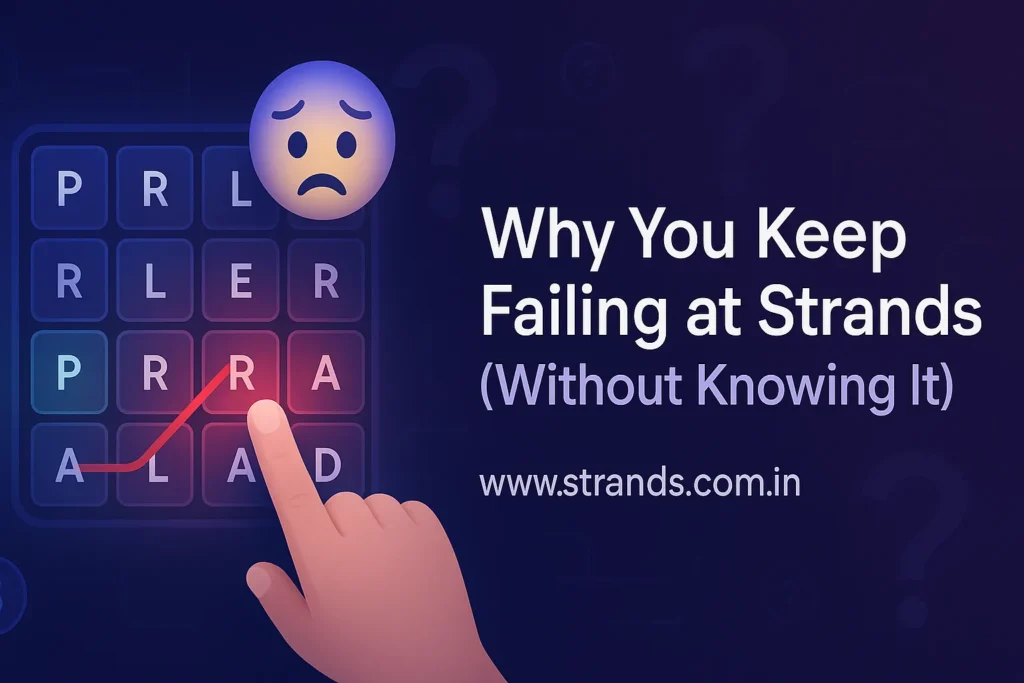
Strands subtly punishes common, automatic behaviors that feel helpful but actually sabotage your progress. Recognizing these is half the battle.
The worst thing you can do in Strands
Frantically tapping letters in hopes of stumbling upon a word is a guaranteed path to failure and a lower score. Each incorrect guess penalizes you and scrambles the board, breaking your concentration and visual memory of letter positions.
This often triggers a “panic spiral”, frustration builds, leading to more rushed, random guesses, making the puzzle feel impossibly hard. The fix? Force yourself to pause for a full breath after each wrong guess. Deliberately slow down your swiping. This calmness prevents the spiral and lets your analytical thinking take over.
Why your last word is always the hardest
It’s not just your imagination! Strands deliberately leaves the most obscure thematic word or the one relying on leftover letters that form unusual combinations. The remaining letters are often the least common or form a word that doesn’t intuitively connect to the others.
Don’t force thematic guesses. Instead, look only at the leftover letters. Ignore their positions on the board at first. Jumble them mentally or even write them down separately. This isolates the problem, making it easier to see the valid word hiding within the awkward fragments.
What Strands Players Get Wrong About “Luck”
While a tough letter combo can challenge anyone, true Strands mastery minimizes reliance on luck. Skillful play creates its own opportunities.
How to make your own luck in Strands
You can “rearrange” without swiping! Mentally group letters into different potential starting points, even if they aren’t adjacent on the board. Visualize moving them. This mental flexibility often reveals words you missed by fixating on physical proximity.
Another trick? Try entering a plausible-sounding “fake word” that uses common prefixes/suffixes. While it won’t register as correct, seeing the rejected letters highlighted can spark ideas for real words using those fragments, turning a “miss” into valuable information.
Why some puzzles feel impossible (and how to fix it)
That brick-wall feeling usually stems from overlooking a single, short connector word (like “it”, “be”, “to”) or misinterpreting the theme’s scope. It’s rarely about raw vocabulary.
First, double-check if you’ve missed a tiny word. If that fails, radically reinterpret the theme clue. Could “Water Source” include “tap” or “well”, not just “river”? Taking a 5-minute break is also scientifically proven to boost insight, walk away and return with fresh eyes.
How to Play Strands Like You’re Cheating
Elevate your game with these clever, ethical strategies that feel like insider knowledge but are simply smart play.
The “stare at the board” trick
Intense focus creates blind spots. Literally close your eyes for 3-5 seconds after scanning. This brief reset clears your visual cache. When you reopen them, your brain often processes the board as if new, highlighting patterns it previously filtered out. It leverages the way your subconscious continues working on problems passively, often delivering the solution when conscious effort stops.
The sneaky way to reuse letters
Found a word like “SPRINT”? Don’t just move on! Immediately look at its component parts: “PRINT” is a word itself. “SPIN” is another. “RINT” might spark “GRINT” leading to “GRIN”. One found word is a goldmine of embedded smaller words and letter clusters that can directly lead you to the next solution, especially the shorter connector words. Actively dissect every word you find for bonus clues.
Final Tip: Stop Trying So Hard
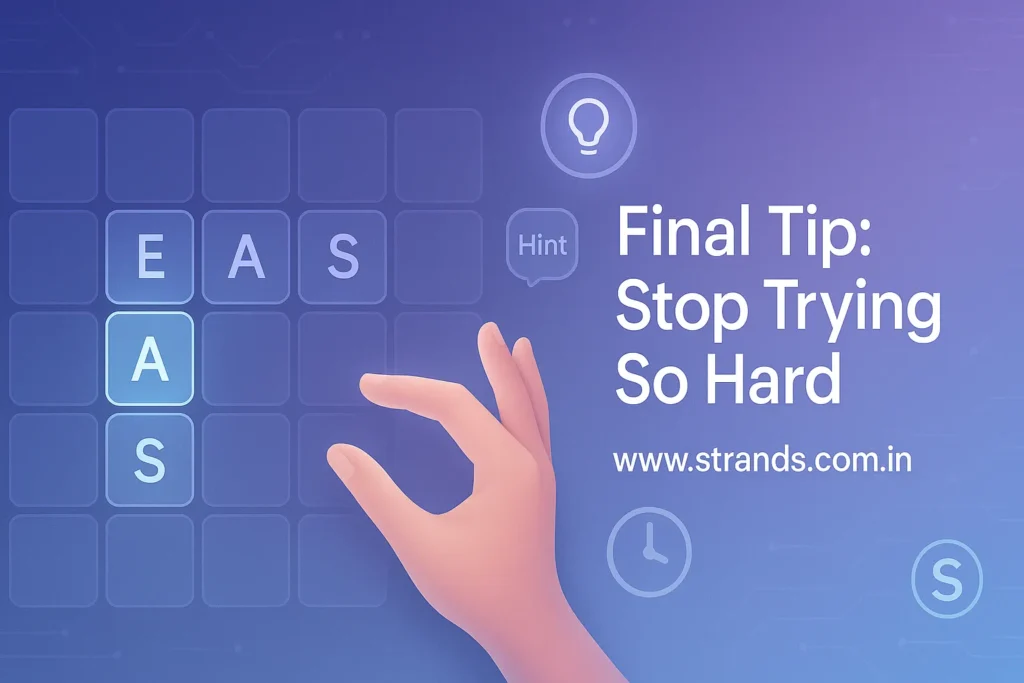
Paradoxically, the key to mastering the Strands often involves less frantic effort, not more. Overthinking forces your brain into narrow, logical pathways, blinding you to the lateral connections the puzzle requires. The best players cultivate a relaxed, almost playful focus. They scan the board gently, let their mind wander slightly around the theme, and trust their subconscious pattern recognition to bubble up answers.
The easiest, yet most neglected, way to improve? Play one puzzle slowly each day, focusing solely on the process without stressing about time or score. This builds intuitive skill far faster than grinding through multiple puzzles in a tense rush. Let the words come to you.
Frequently Asked Questions
Q: Is there a real strategy for finding the theme word faster?
A: Absolutely! Don’t fixate on the theme clue immediately. Find 2-3 shorter words first. Often, the process of finding these reveals letter patterns or common prefixes/suffixes that directly point towards the theme word’s structure. Look for what the found words have in common besides the theme.
Q: Why do I sometimes see words that aren’t accepted?
A: Strands uses a specific dictionary, prioritizing common usage. It might exclude very obscure words, highly specialized jargon, or proper nouns. If a seemingly valid word isn’t accepted, it’s likely not in that puzzle’s word list, try focusing on more frequent vocabulary or checking if it perfectly fits the theme.
Q: Does practicing other word games help with Strands?
A: Yes, but with a caveat. Games like Scrabble or Boggle build general vocabulary and anagram skills. However, Strands uniquely combines thematic thinking, finding embedded words, and spotting connector words. The best practice is playing Strands itself, mindfully applying the strategies above to build its specific mental muscles.
Unlock Your Strands Potential
The magic of the Strands isn’t just in solving the puzzle, but in outsmarting its elegant design. It’s a game that whispers secrets only to those who learn its language, the language of hidden biases, psychological resets, and effortless shortcuts.
Forget struggling against the board. Now you know how the strands game tries to trick you, the lazy shortcuts pros rely on, why panic is your worst enemy, and how to manufacture your own luck. You’ve learned to see the leftover letters not as chaos, but as clues, and to let go of overthinking to find flow. Implement these strategies: scan backwards, hunt for two-letter anchors, embrace the mental reset, and dissect found words.
Watch as frustrating grids transform into satisfying solves. Remember, the final secret isn’t brute force; it’s the calm confidence of knowing Strands’ tricks and playing smarter. Head back to the board and experience the difference, your next “Genius” rating awaits.

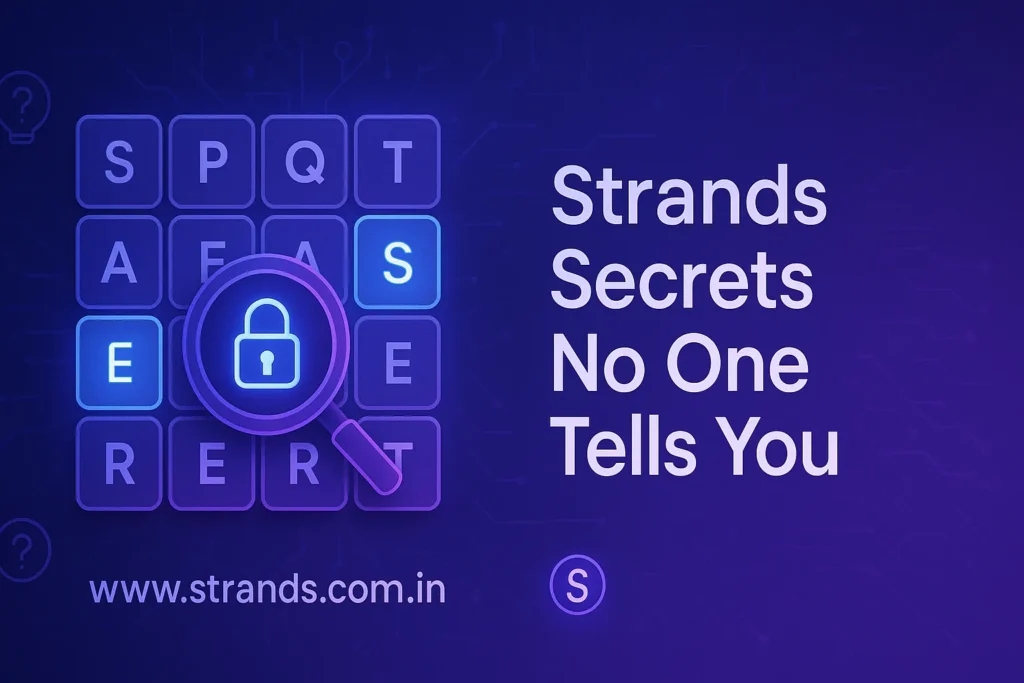
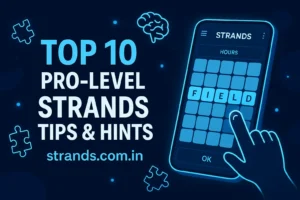
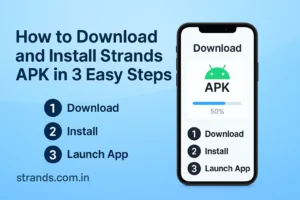
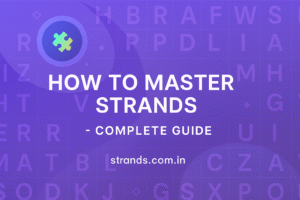
Leave a Comment